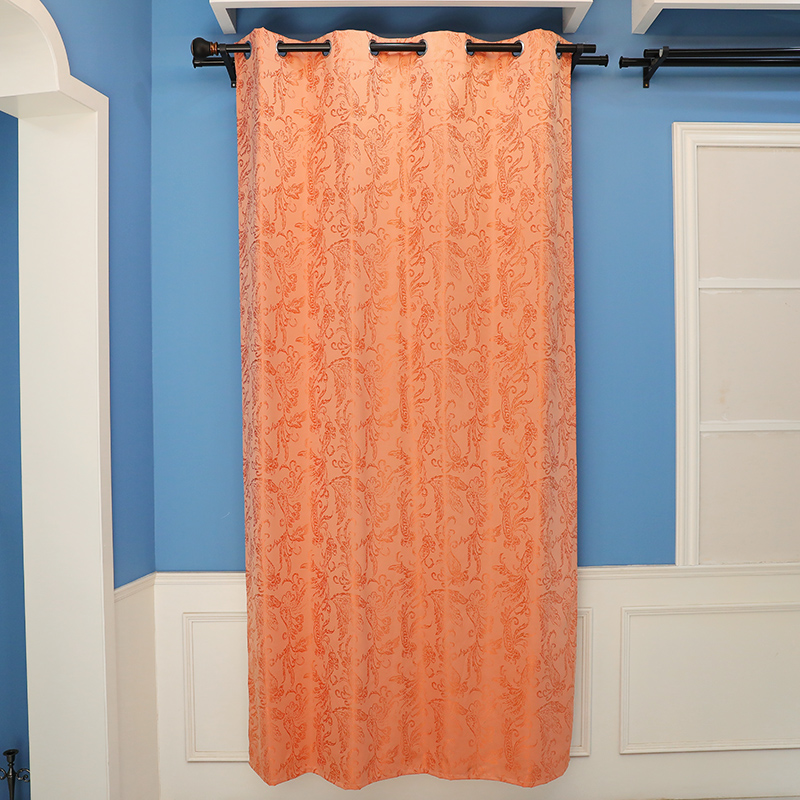How does the Plain Blockout Curtain perform in reducing external noise levels?
Posted by Admin
Plain Blockout Curtains typically perform moderately well in reducing external noise levels compared to standard curtains, sheer curtains, or blinds. The effectiveness of these curtains in noise reduction depends on several factors:
Thickness and Density: Plain Blockout Curtains are engineered with materials specifically chosen for their superior thickness and density. These curtains are crafted using multiple layers of heavy-duty fabric, often incorporating specialized fibers or coatings designed to enhance their sound-blocking properties. The increased density of the fabric enables it to act as a formidable barrier against external noise intrusion. Sound waves attempting to penetrate the curtain encounter resistance as they travel through the dense layers, resulting in a significant reduction in noise transmission into the room. The thickness and density of Plain Blockout Curtains play a crucial role in their ability to effectively absorb and block a wide range of frequencies, including low-frequency sounds commonly associated with traffic, machinery, and urban environments.
Material Quality: The quality of the fabric used in Plain Blockout Curtains is paramount to their performance in noise reduction. Manufacturers prioritize the selection of high-quality materials known for their exceptional acoustic insulation properties. These materials undergo rigorous testing and evaluation to ensure they meet stringent standards for noise reduction effectiveness. Premium-grade fabrics with superior density, durability, and sound-absorbing capabilities are chosen to construct Plain Blockout Curtains that deliver optimal noise reduction results. By investing in curtains made from top-quality materials, users can expect to experience enhanced soundproofing benefits and long-lasting performance, contributing to a quieter and more comfortable living or working environment.
Coverage: Achieving comprehensive coverage is essential to maximize the noise reduction potential of Plain Blockout Curtains. Proper installation involves ensuring that the curtains fully cover the entire window area without leaving any gaps or openings that could compromise their effectiveness. Sealable edges and weighted bottoms may be incorporated into the curtain design to provide a secure fit and minimize air leakage. Additionally, utilizing curtain rods, tracks, or hooks designed to support the weight of the curtains can help maintain their position and prevent sagging or billowing, ensuring uninterrupted coverage. By optimizing coverage, users can create a seamless barrier that effectively blocks external noise from entering the room, fostering a quieter and more peaceful indoor environment.
Environment: The performance of Plain Blockout Curtains in reducing external noise levels is influenced by the surrounding environmental conditions. While these curtains excel in attenuating moderate levels of ambient noise commonly encountered in residential areas, their effectiveness may be limited in environments characterized by exceptionally high noise levels or continuous disturbances. Factors such as proximity to busy roadways, construction sites, or industrial facilities can impact the degree of noise reduction achievable with Plain Blockout Curtains alone. In such scenarios, implementing additional soundproofing measures, such as installing secondary glazing, soundproofing panels, or acoustic seals, may be necessary to mitigate excessive noise transmission effectively.
Additional Soundproofing Measures: Enhancing the noise reduction capabilities of Plain Blockout Curtains often involves implementing supplementary soundproofing techniques to address specific acoustic challenges. These measures can include sealing gaps and cracks around windows and doors using weatherstripping or caulking to minimize air leaks and sound transmission pathways. Installing heavy-duty curtains or drapes alongside Plain Blockout Curtains can further enhance sound absorption and blockage, especially when layered with soundproofing materials such as mass-loaded vinyl or fiberglass insulation. Additionally, incorporating sound-absorbing panels or acoustic treatments on walls and ceilings can help reduce reverberation and improve overall sound quality within the room.
Classic European royal style Jacquard curtain for home and office

Classic European royal style Jacquard curtain for home and office

One-stop Solutions for All Industries


 English
English Español
Español













